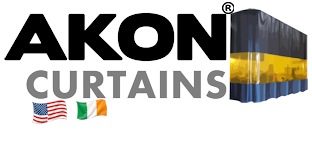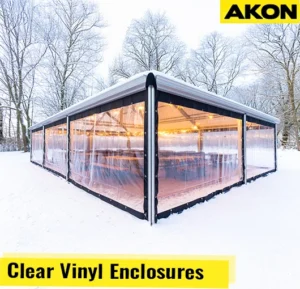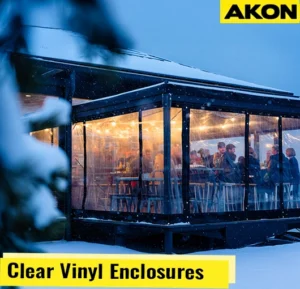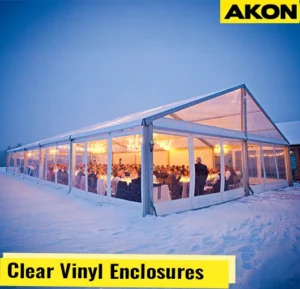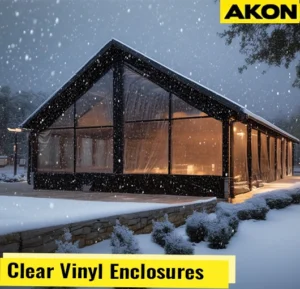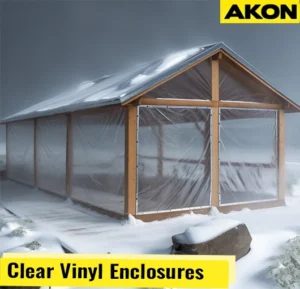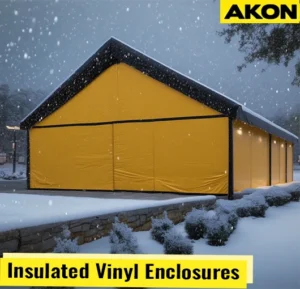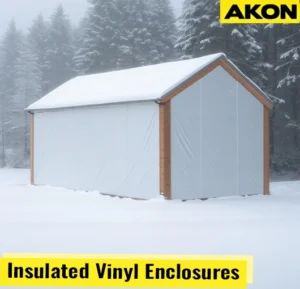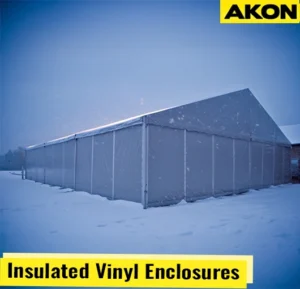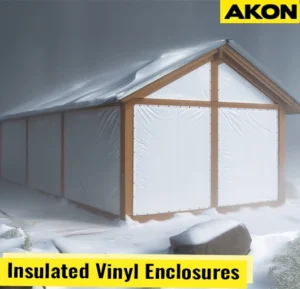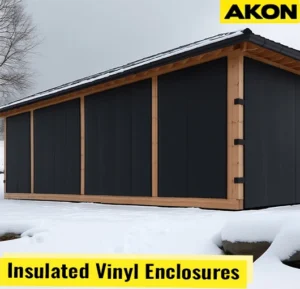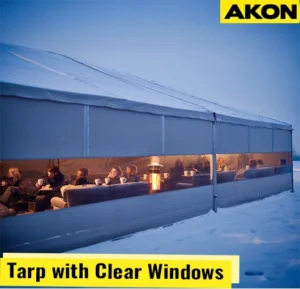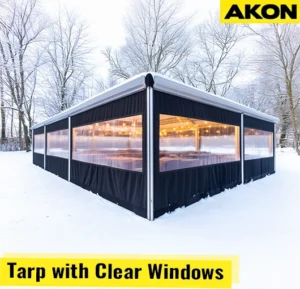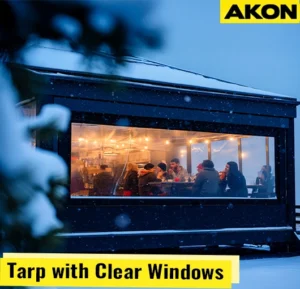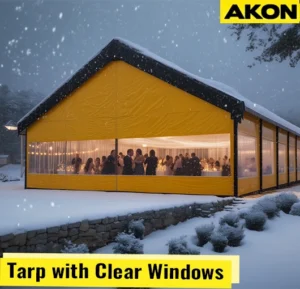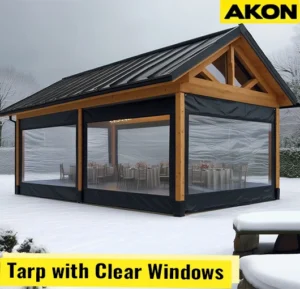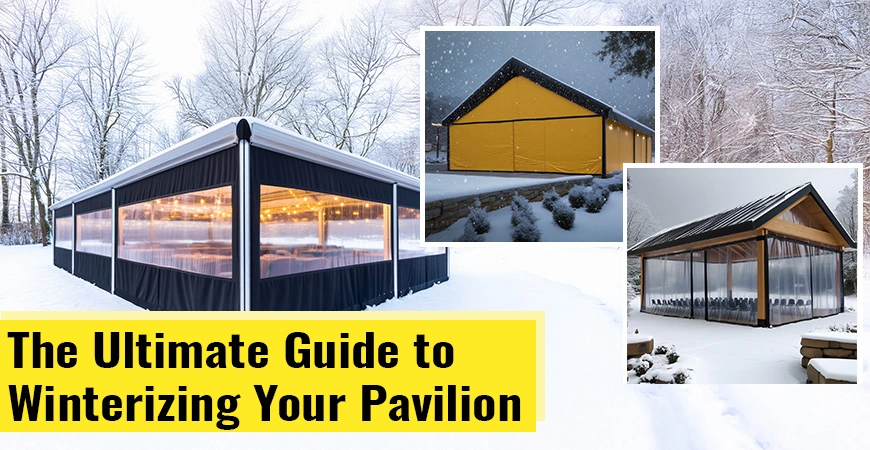
Overview
Pavilions and other outdoor areas can be hard to use in the winter. Snow builds up, temperatures drop below freezing, and strong winds test every structure. A pavilion left unprotected can suffer serious damage during the cold months.
Winterizing a pavilion protects the investment and extends its usable life. This guide covers practical solutions, helpful tips, and proven solutions for protecting outdoor pavilions during winter.
Why Winterize a Pavilion?
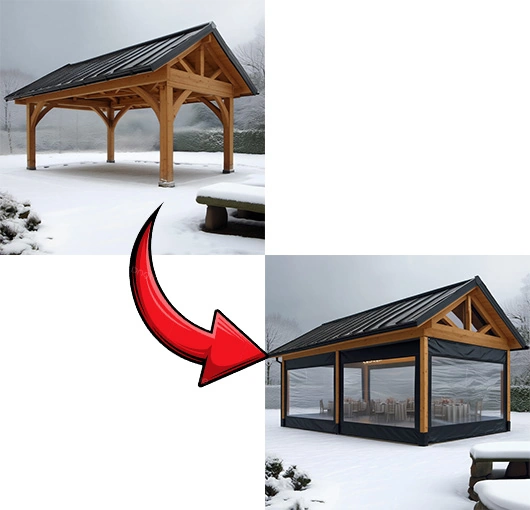
Protection from winter weather serves several important purposes. When water gets into small cracks and freezes, it expands. This expansion can crack wood, damage concrete, and harm other materials over time.
Wind causes problems too. Winter storms bring strong gusts that can damage furniture, tear down decorations, and even harm the pavilion itself. Setting up proper barriers stops this damage before it starts.
With the right enclosures and heat sources, you can turn an outdoor area into a cozy place to spend the winter. This means more time enjoying the pavilion instead of leaving it empty for months.
Money matters as well. Fixing winter damage costs far more than preventing it. Protecting outdoor furniture and equipment from harsh weather helps them last longer. Spending a little time and money to prepare for winter can save you a lot of money in repairs later on.
Best Solutions for Winterizing Pavilions
Vinyl Curtain Enclosures
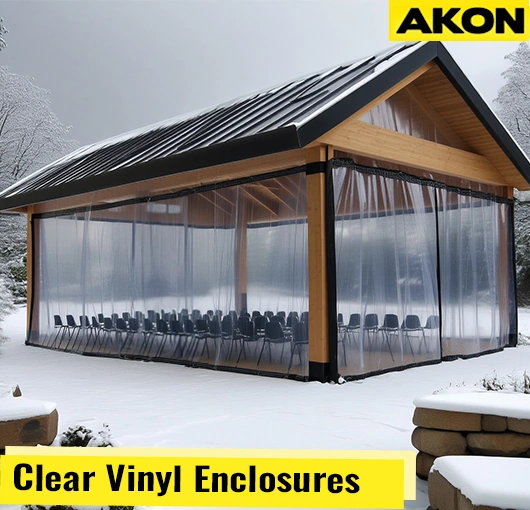
Clear vinyl enclosures are the go-to choice for most pavilion owners. These heavy duty curtains block wind, rain, snow, and freezing temperatures while maintaining complete visibility. AKON's Patio Clear Wind Blocker uses commercial grade clear vinyl that withstands harsh weather conditions.
The beauty of clear vinyl is simple. Natural light floods through during the day, so the space never feels dark or closed in. Track systems mount to pavilion posts and beams. Snap button attachments offer another easy option. When warm weather arrives, the curtains roll up or remove completely in minutes. The whole initial setup takes just a few hours for most residential pavilions.
Custom sizing ensures perfect fits without gaps where cold air sneaks through. AKON makes each enclosure to exact measurements. With proper maintenance, these clear vinyl enclosures last 7 to 10 years. Some installations even make it to 15 years.
Insulated Vinyl Enclosures
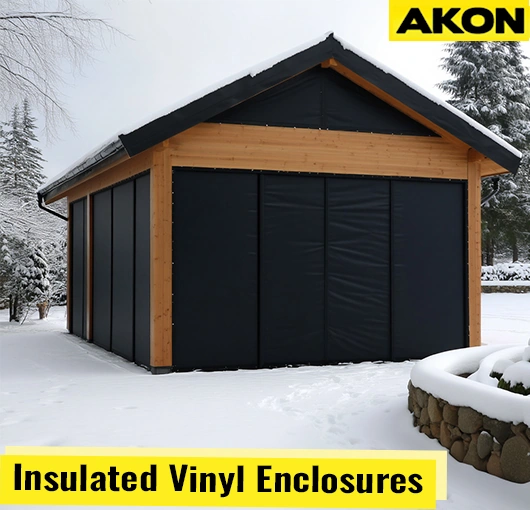
Insulated vinyl enclosures take weather protection to the next level. AKON's Insulated Patio Enclosure Curtains use multiple layers of material with insulating foam between them. This creates a thermal barrier that dramatically reduces heat loss.
These work exceptionally well in areas with severe winters. The insulation keeps enclosed pavilions much warmer with less heating energy. For people planning to use their pavilion regularly during winter, the energy savings add up quickly. Heating costs can drop by 40% or more compared to single layer enclosures.
The insulated curtains are heavier than clear vinyl, but installation follows the same basic process. The multiple layers make it more durable against tears and damage than materials with only one layer. Most of the time, these shelters last 10 years or longer with little upkeep. Insulated curtains are the best choice for harsh weather.
Tarp with Clear Windows
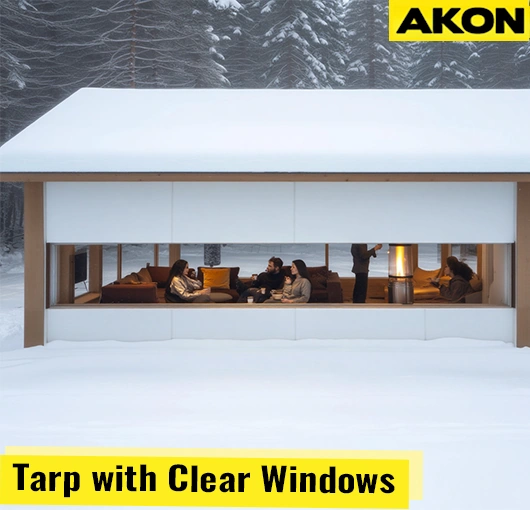
Tarps with clear vision panels offer a smart and affordable solution. AKON's Tarps with Clear Windows combines heavy-duty tarp and clear vinyl panels so you can still enjoy the view even during winter.
The vinyl provides excellent weather resistance and privacy where needed. Clear vinyl windows get positioned to let natural light in and still enjoy the view during winter. This design works really well for pavilions where full transparency isn't necessary but some visibility matters.
Cost wise, these typically run less than full clear vinyl enclosures. The tarp material costs less than clear vinyl per square foot. For larger pavilions, this price difference becomes significant.
Installation is also quick and easy just like the other vinyl options. Grommets around the perimeter allow for various attachment methods. The material is tough and handles wind well. Expected lifespan runs 5 to 8 years depending on climate conditions and maintenance.
Wooden or Polycarbonate Wall Panels
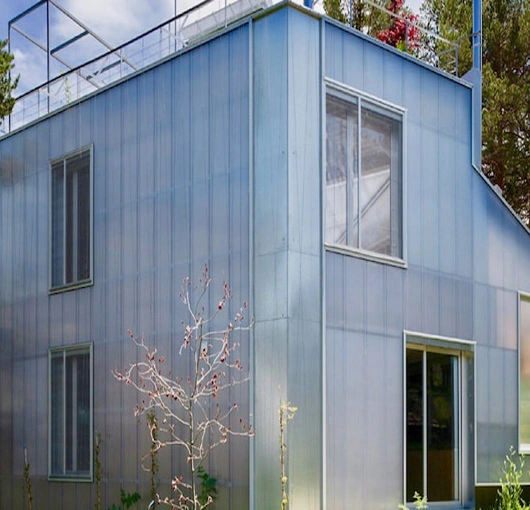
Solid panels completely enclose a pavilion. Wood panels give a traditional look and insulate well. Polycarbonate panels are tough, resist impacts, and still let light through.
This approach is more permanent. Installing panels requires either good carpentry skills or hiring someone who knows what they're doing. Some municipalities require building permits for permanent enclosures like this. The panels also need somewhere to go during summer if they're seasonal.
The benefit is durability. Panel systems typically last 10 to 15 years. For someone who wants a fully enclosed year round space and doesn't mind the permanence, panels work well.
Canvas Drop Curtains
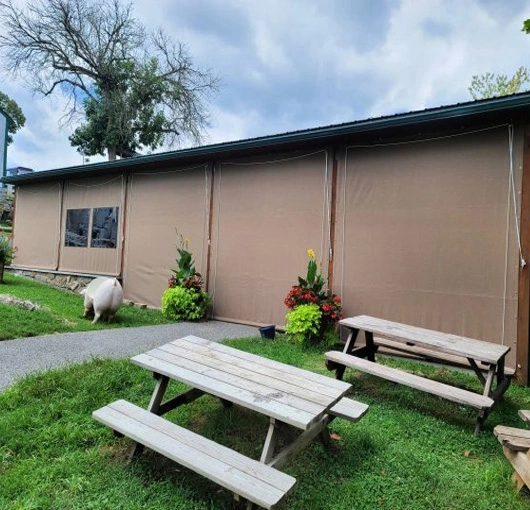
Canvas sits somewhere between cheap plastic and heavy vinyl. Decent canvas material handles weather better than plastic and looks more polished. Marine grade canvas has waterproof coatings that help.
Canvas does need more attention than vinyl since it can get moldy in moist conditions if not maintained properly. Most canvas curtains make it 3 to 5 years before needing replacement. They work well for people who like the traditional look of canvas and don't mind a bit more maintenance.
Comparing All Your Options
The best option to enclose your pavilion depends on how you want to use the space and what kind of weather you want to keep out. Some materials let you see everything and keep you comfortable all year long, while others are more focused on insulation, privacy, or conserving money. This simple comparison chart shows you the benefits and cons of each choice, from clear vinyl panels to more permanent wall systems. This will help you choose the one that works best for your outdoor setting.
| Solution | Description | 💰 Cost | 🧰 Installation | 👀 Visibility | 🕒 Lifespan | 🎯 Best For |
|---|---|---|---|---|---|---|
| ☀️ Clear Vinyl Enclosures (AKON Patio Wind Blocker) ⭐ Recommended | Commercial-grade clear vinyl that blocks wind, rain, and snow ❄️ while maintaining full visibility. Installs via track or snap system and rolls up easily for warm seasons. | $$–$$$ | Easy to Moderate 🔧 (2–4 hours) | 🌈 Excellent – fully transparent | ⏳ 7–15 years | 🏡 Year-round visibility & weather protection |
| ❄️ Insulated Vinyl Enclosures (AKON Insulated Patio Curtains) ⭐ Recommended | Multi-layer vinyl with insulating foam 🔲 that reduces heat loss by up to 40%. Great for cold climates and energy efficiency; may include clear windows for light. | $$$ | Moderate to Professional 🪚 | 🌤️ Partial – optional clear panels | 🕒 10+ years | 🔥 Cold climates; energy efficiency savings |
| 🪟 Tarps with Clear Vision Panels (AKON Hybrid Solution) ⭐ Recommended | Hybrid design 🧩 with tarp walls for privacy and clear vinyl windows for natural light. A cost-effective balance between visibility and protection. | $$ | Easy 🪛 | 🔆 Moderate – windowed sections | ⏳ 5–8 years | 💡 Budget-friendly choice with partial visibility |
| 🎨 Canvas Drop Curtains | Marine-grade canvas with waterproof coating 🌦️. Offers a classic look but needs maintenance to prevent mold and mildew. | $–$$ | Easy 🧵 | 🚫 Limited – opaque | 🕒 3–5 years | 🌻 Traditional aesthetic; light seasonal use |
| 🏗️ Wooden or Polycarbonate Wall Panels | Permanent wall system 🪵 or 🪟 polycarbonate for full enclosure. Durable and long-lasting but requires professional installation or permit. | $$$–$$$$ | Professional 👷♂️ | 🔳 High (polycarbonate) / None (wood) | 🕒 10–15 years | 🏠 Permanent, all-season enclosures |
The Best Solution: Vinyl Porch Enclosures
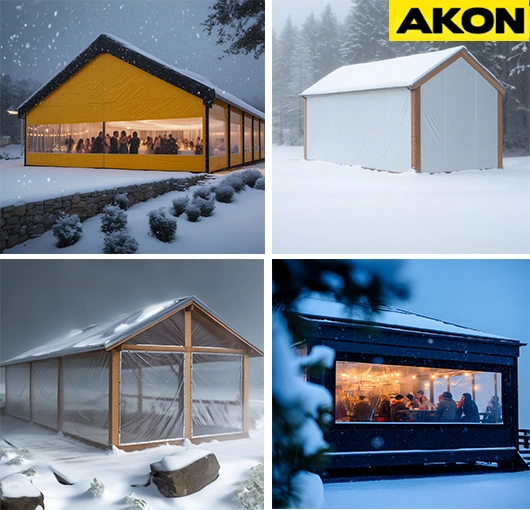
Why Vinyl Enclosures Are Worth It
For most pavilions, vinyl curtain enclosures are the best all-around solution. They protect against bad weather quite well. They stay flexible even when it's freezing outside and resist wind, rain, and snow.
Installing them, is quick and easy; you don't need any specific tools or abilities. Vinyl is also cheaper than glass and can last up to 10 years, so it's a good long-term investment. It can be made to fit any pavilion, is easy to clean, and doesn't go moldy.
Vinyl enclosures are preferable for outdoor living since they are easy to set up, last a long time, and keep you comfortable all year round.
Easy Install
Outdoor curtains come with grommets at the top making hanging the curtains quick and easy with or without the curtain track.
Inexpensive
Outdoor curtains are about 1/3rd of the cost of other separation methods such as rigid walls or panel systems and are easy to store.
Temperature Control
Keep consistent temperatures inside more consistent for a more comfortable work environment and pull open when not needed.
Wind Blocking
Keep the wind and rain out when the weather turns nasty but still have the ability to pull open the curtain when its nice or you need access.
Material Options
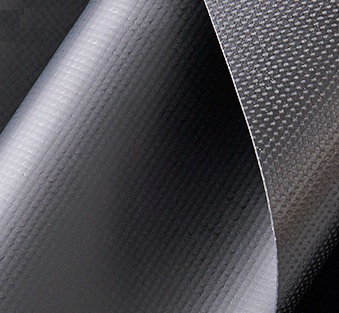
Opaque Vinyl
Industrial grade 18oz opaque vinyl ideal for moderate temperature control and blocking line of sight. $$
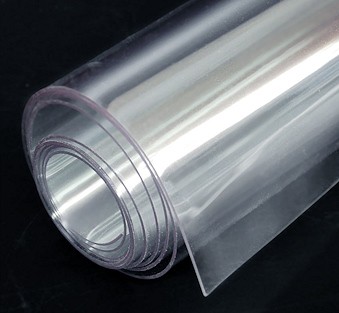
Clear Vinyl
Industrial grade 30mil clear vinyl ideal for moderate temperature control and allowing a line of sight. $$
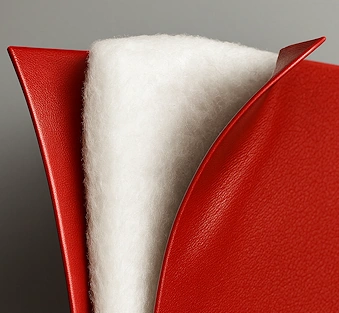
Insulated Vinyl
Industrial R3 1/2" thick material with 18oz vinyl skins ideal for heavy temperature control and blocking the line of sight. $$
Frequently Asked Questions
Vinyl enclosures are an excellent choice if you want to keep your pavilion toasty this winter. This FAQ gives straightforward answers to popular topics including how they function, how to put them up, and how they keep your outdoor space safe from wind, rain, and cold weather.
Pavilion Winterization with Vinyl Enclosures – FAQ
What is a vinyl pavilion enclosure?
A vinyl pavilion enclosure uses clear or insulated PVC curtains attached to the posts or beams of your structure. They block wind, rain, and snow while keeping visibility and natural light. When the weather warms up, the panels can roll up or be removed completely.
Which type of vinyl works best for winter?
Clear vinyl is ideal for visibility and daylight. Insulated vinyl adds a thermal barrier to hold heat inside, while hybrid tarps with clear windows balance privacy and light at a lower cost. For most climates, 30–40 mil clear vinyl is a reliable all-season choice.
Will a vinyl enclosure make my pavilion warmer?
Yes. Blocking drafts and trapping air raises the temperature inside noticeably. When paired with a safe outdoor heater, vinyl enclosures create a cozy, wind-free space for winter gatherings. Insulated vinyl provides the highest heat retention.
Is it safe to use heaters inside a vinyl enclosure?
Yes, as long as safety guidelines are followed. Use outdoor-rated electric or infrared heaters, maintain clearance from vinyl panels, and allow for ventilation to prevent condensation. Avoid propane or open-flame heaters inside enclosed spaces.
How are vinyl panels installed on a pavilion?
Panels mount to beams or posts using tracks, grommets, or snap systems. You can install them yourself with basic tools, but for large or complex layouts, professional help ensures tight weather seals and a perfect fit.
Can vinyl enclosures handle wind and snow?
Yes. Heavy-gauge vinyl and quality hardware perform well in winter weather. Reinforced hems, bottom tie-downs, and track systems help the panels stay secure. During severe storms, rolling up wind-facing panels can reduce pressure.
How do I prevent condensation on clear vinyl panels?
Ensure good airflow by cracking a panel open or adding small vents. Keep surfaces clean with mild soap and water, then dry thoroughly. Avoid ammonia or abrasive cleaners to maintain clarity and shine.
Can I install a vinyl pavilion enclosure myself?
Most homeowners can handle installation for simple square spaces. Measure carefully, mark your hardware points, and fasten securely. For angled openings or multi-door layouts, professional installation may save time and improve the seal.
How long do vinyl enclosures last?
High-quality commercial vinyl lasts 7 to 10 years or longer with minimal maintenance. Keep panels clean, store them dry in the off-season, and repair small tears quickly to extend their lifespan.
How do I maintain vinyl enclosures during winter?
Wash occasionally with mild soap and water, then dry to prevent fogging or mildew. Check fasteners, zippers, and seams. Avoid scraping snow or ice with sharp tools to protect the vinyl surface.
Can I remove the vinyl panels after winter?
Yes. Vinyl curtains are made to roll up or detach easily for storage. Clean and dry them, then roll onto a core and store in a cool, shaded place until next season.
Will a vinyl enclosure block sunlight or views?
No. Clear vinyl keeps your pavilion bright and open while shielding it from cold air. Insulated versions can include clear sections to balance warmth with outdoor visibility.
Summary
No one should have to stay inside for months because of the weather in the winter. The right solution should help you enjoy your outdoor space even during winter time.
Here are the things that set AKON enclosures apart:
- Heavy-duty vinyl made to stand up to very bad weather
- Material that is crystal clear lets in natural light and gives you clear perspectives.
- Most people can install it themselves without any problems.
- Help from professionals is always available.
- Any application can have its own size and settings.
- Quality built in the USA at prices that are competitive. Flexible attachment mechanisms that fit with any pavilion design.
- Advice from professionals that really know this business
- Quick turnaround on production and shipment across the country
Ready to Get Started?
Call us today for a free consultation and a price that is just for you. We have solutions that work no matter what kind of weather you have to deal with, whether it's harsh northern winters or mild seasonal weather.
